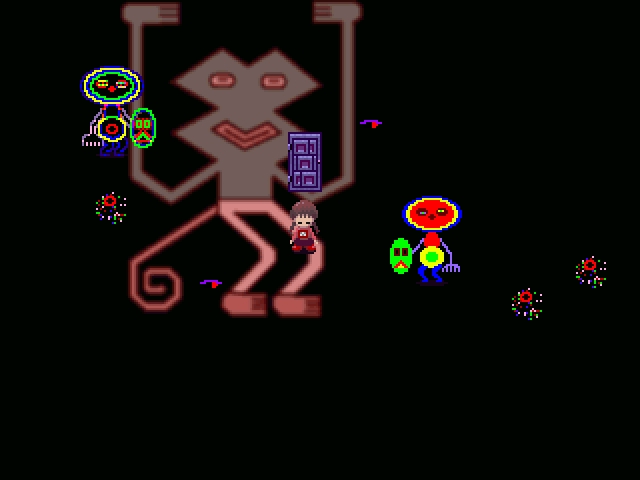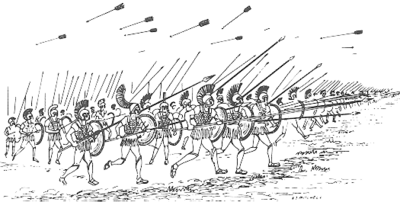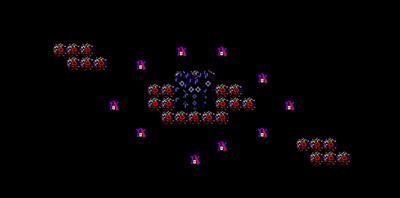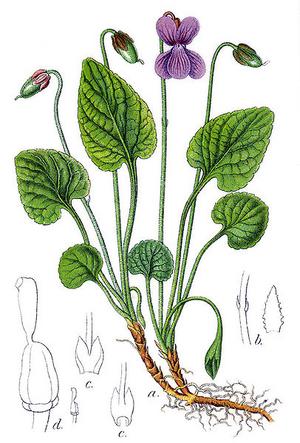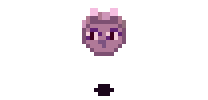>Mt.kiki No edit summary |
mNo edit summary |
||
| (5 intermediate revisions by 4 users not shown) | |||
| Line 37: | Line 37: | ||
==[[Shield-Folk World]]([http://en.wikipedia.org/wiki/Phalanx_formation Phalanx formation])== | ==[[Yume Nikki:Shield-Folk World|Shield-Folk World]]([http://en.wikipedia.org/wiki/Phalanx_formation Phalanx formation])== | ||
[[File:Shield-Folk(Phalanx_Formation).jpg|thumb|left|Shield-Folk(Phalanx_Formation)]][http://ja.wikipedia.org/wiki/%E7%9B%BE#.E7.9B.BE.E3.81.AE.E7.B2.BE.E7.A5.9E.E6.80.A7 A shield] is used as a defensive symbol to the sword which symbolizes an attack. The phalanx represented in Macedonia was the troops in close formation who pile up a long spear and shield and make a rank.A soldier protects with a shield the right side of the body of the war comrade who stood in a line horizontally.Therefore, to lose a shield was made into the very dishonorable thing. Moreover, what those who accomplished the creditable battle casualty "which is shouldered on a shield and returns in triumph" were put on the shield, and the friend had them for is meant. | [[File:Shield-Folk(Phalanx_Formation).jpg|thumb|left|Shield-Folk(Phalanx_Formation)]][http://ja.wikipedia.org/wiki/%E7%9B%BE#.E7.9B.BE.E3.81.AE.E7.B2.BE.E7.A5.9E.E6.80.A7 A shield] is used as a defensive symbol to the sword which symbolizes an attack. The phalanx represented in Macedonia was the troops in close formation who pile up a long spear and shield and make a rank.A soldier protects with a shield the right side of the body of the war comrade who stood in a line horizontally.Therefore, to lose a shield was made into the very dishonorable thing. Moreover, what those who accomplished the creditable battle casualty "which is shouldered on a shield and returns in triumph" were put on the shield, and the friend had them for is meant. | ||
== | ==Shield-Folk World([http://en.wikipedia.org/wiki/Sacred_Band_of_Thebes Sacred Band of Thebes])== | ||
According to Plutarch, the 300 hand-picked men were chosen by Gorgidas purely for ability and merit, regardless of social class.<sup class="reference" id="cite_ref-devoto_17-0" sizcache05549878698924502="55 143 90" sizset="false">[http://en.wikipedia.org/wiki/Sacred_Band_of_Thebes#cite_note-devoto-17 <u>[17</u>]]</sup> It was composed of 150 pederastic male couples,<sup class="reference" id="cite_ref-ludwig_14-2" sizcache05549878698924502="55 143 91" sizset="false">[http://en.wikipedia.org/wiki/Sacred_Band_of_Thebes#cite_note-ludwig-14 <u>[14</u>]]</sup> each pair consisting of an older erastês (ἐραστής, "lover") and a younger erômenos (ἐρώμενος, "beloved").<sup class="reference" id="cite_ref-plutarchD_18-0" sizcache05549878698924502="55 143 92" sizset="false">[http://en.wikipedia.org/wiki/Sacred_Band_of_Thebes#cite_note-plutarchD-18 <u>[18</u>]]</sup> | According to Plutarch, the 300 hand-picked men were chosen by Gorgidas purely for ability and merit, regardless of social class.<sup class="reference" id="cite_ref-devoto_17-0" sizcache05549878698924502="55 143 90" sizset="false">[http://en.wikipedia.org/wiki/Sacred_Band_of_Thebes#cite_note-devoto-17 <u>[17</u>]]</sup> It was composed of 150 pederastic male couples,<sup class="reference" id="cite_ref-ludwig_14-2" sizcache05549878698924502="55 143 91" sizset="false">[http://en.wikipedia.org/wiki/Sacred_Band_of_Thebes#cite_note-ludwig-14 <u>[14</u>]]</sup> each pair consisting of an older erastês (ἐραστής, "lover") and a younger erômenos (ἐρώμενος, "beloved").<sup class="reference" id="cite_ref-plutarchD_18-0" sizcache05549878698924502="55 143 92" sizset="false">[http://en.wikipedia.org/wiki/Sacred_Band_of_Thebes#cite_note-plutarchD-18 <u>[18</u>]]</sup> | ||
| Line 49: | Line 49: | ||
== | ==Shield-Folk World([http://en.wikipedia.org/wiki/LGBT_symbols#Purple_hand Purple hand])== | ||
Inspired by [http://en.wikipedia.org/wiki/Black_Hand_(extortion) <u>Black Hand</u>] extortion methods of [http://en.wikipedia.org/wiki/Camorra <u>Camorra</u>] [http://en.wikipedia.org/wiki/Gangster <u>gangsters</u>] and the [http://en.wikipedia.org/wiki/Mafia <u>Mafia</u>],<sup class="reference" id="cite_ref-Nash_15-0" sizcache043186034609643214="61 163 175" sizset="false">[http://en.wikipedia.org/wiki/LGBT_symbols#cite_note-Nash-15 <u>[15</u>]]</sup> some gay and lesbian activists attempted to institute "purple hand" as a warning to stop anti-gay attacks, with little success. In Turkey, the LGBT rights organization MorEl Eskişehir LGBTT Oluşumu (Purple Hand Eskişehir LGBT Formation), also bears the name of this symbol.<sup class="reference" id="cite_ref-16" sizcache043186034609643214="61 163 176" sizset="false">[http://en.wikipedia.org/wiki/LGBT_symbols#cite_note-16 <u>[16</u>]]</sup> | Inspired by [http://en.wikipedia.org/wiki/Black_Hand_(extortion) <u>Black Hand</u>] extortion methods of [http://en.wikipedia.org/wiki/Camorra <u>Camorra</u>] [http://en.wikipedia.org/wiki/Gangster <u>gangsters</u>] and the [http://en.wikipedia.org/wiki/Mafia <u>Mafia</u>],<sup class="reference" id="cite_ref-Nash_15-0" sizcache043186034609643214="61 163 175" sizset="false">[http://en.wikipedia.org/wiki/LGBT_symbols#cite_note-Nash-15 <u>[15</u>]]</sup> some gay and lesbian activists attempted to institute "purple hand" as a warning to stop anti-gay attacks, with little success. In Turkey, the LGBT rights organization MorEl Eskişehir LGBTT Oluşumu (Purple Hand Eskişehir LGBT Formation), also bears the name of this symbol.<sup class="reference" id="cite_ref-16" sizcache043186034609643214="61 163 176" sizset="false">[http://en.wikipedia.org/wiki/LGBT_symbols#cite_note-16 <u>[16</u>]]</sup> | ||
See also: [http://en.wikipedia.org/wiki/Gay_Mafia <u>Gay Mafia</u>] | See also: [http://en.wikipedia.org/wiki/Gay_Mafia <u>Gay Mafia</u>] | ||
== | ==Shield-Folk World(The Shrine of [http://en.wikipedia.org/wiki/Iolaus <u>Lolaus</u>])== | ||
[[File:The_Shrine_of_Iolaus.jpg|thumb|left|400px|The_Shrine_Of_Iolaus]]The origin of the "sacred" appellation of the Sacred Band is unexplained by Dinarchus and other historians. But Plutarch claims that it was due to an exchange of sacred vows between lover and beloved at '''the shrine of [http://en.wikipedia.org/wiki/Iolaus <u>Iolaus</u>] '''(one of the lovers of [http://en.wikipedia.org/wiki/Hercules <u>Hercules</u>]) at Thebes. He also tangentially mentions Plato's characterization of the lover as a "friend inspired of God". | [[File:The_Shrine_of_Iolaus.jpg|thumb|left|400px|The_Shrine_Of_Iolaus]]The origin of the "sacred" appellation of the Sacred Band is unexplained by Dinarchus and other historians. But Plutarch claims that it was due to an exchange of sacred vows between lover and beloved at '''the shrine of [http://en.wikipedia.org/wiki/Iolaus <u>Iolaus</u>] '''(one of the lovers of [http://en.wikipedia.org/wiki/Hercules <u>Hercules</u>]) at Thebes. He also tangentially mentions Plato's characterization of the lover as a "friend inspired of God". | ||
| Line 59: | Line 59: | ||
[[File:Viola_uliginosa_Sturm53.jpg|thumb|Shield-FolkWorld_Violets]] | [[File:Viola_uliginosa_Sturm53.jpg|thumb|Shield-FolkWorld_Violets]] | ||
==[[ | ==[[Yume Nikki:Shield-Folk|Fluorescent non-NPC characters]]([http://en.wikipedia.org/wiki/Viola_(plant) Viola])== | ||
In addition to major symbols of the LGBT community, less-popular symbols have been used to represent members’ unity, pride, shared values, and allegiance to one another. | In addition to major symbols of the LGBT community, less-popular symbols have been used to represent members’ unity, pride, shared values, and allegiance to one another. | ||
| Line 68: | Line 68: | ||
http://en.wikipedia.org/wiki/LGBT_symbols#Other_symbols | http://en.wikipedia.org/wiki/LGBT_symbols#Other_symbols | ||
== | ==Fluorescent non-NPC characters([http://en.wikipedia.org/wiki/HOMO HOMO])== | ||
HOMO and LUMO are [http://en.wikipedia.org/wiki/Acronym <u>acronyms</u>] for highest occupied [http://en.wikipedia.org/wiki/Molecular_orbital <u>molecular orbital</u>] and lowest unoccupied molecular orbital, respectively. The energy difference between the HOMO and LUMO is termed the HOMO-LUMO gap. HOMO and LUMO are sometimes referred to as frontier orbitals.<sup class="reference" id="cite_ref-1" sizcache0625527419607367="75 172 12" sizset="false">[http://en.wikipedia.org/wiki/HOMO#cite_note-1 <u>[1</u>]]</sup> | HOMO and LUMO are [http://en.wikipedia.org/wiki/Acronym <u>acronyms</u>] for highest occupied [http://en.wikipedia.org/wiki/Molecular_orbital <u>molecular orbital</u>] and lowest unoccupied molecular orbital, respectively. The energy difference between the HOMO and LUMO is termed the HOMO-LUMO gap. HOMO and LUMO are sometimes referred to as frontier orbitals.<sup class="reference" id="cite_ref-1" sizcache0625527419607367="75 172 12" sizset="false">[http://en.wikipedia.org/wiki/HOMO#cite_note-1 <u>[1</u>]]</sup> | ||
| Line 86: | Line 86: | ||
[[File:CatMado.png|thumb|CatMadotsuki(招き猫)]] | [[File:CatMado.png|thumb|CatMadotsuki(招き猫)]] | ||
==[[Effects#Cat|Effects]]([http://ja.wikipedia.org/wiki/%E6%8B%9B%E3%81%8D%E7%8C%AB 招き猫])== | ==[[Yume Nikki:Effects#Cat (ねこ)|Effects]]([http://ja.wikipedia.org/wiki/%E6%8B%9B%E3%81%8D%E7%8C%AB 招き猫])== | ||
The '''''maneki-neko''''' <span sizcache07837451905017655="44 118 5" sizset="false" style="font-weight: normal;">([http://en.wikipedia.org/wiki/Japanese_language <u>Japanese</u>]: 招き猫<sup sizcache07837451905017655="44 118 6" sizset="false">[http://en.wikipedia.org/wiki/Help:Installing_Japanese_character_sets <span class="t_nihongo_icon" style="font: bold 80%/normal sans-serif; padding: 0px 0.1em; color: rgb(0, 0, 238); text-decoration: none; font-size-adjust: none; font-stretch: normal;"><u>?</u></span>]</sup>, literally ''''beckoning cat'''')</span> is a common [http://en.wikipedia.org/wiki/Japan <u>Japanese</u>] figurine (lucky charm, talisman), usually made of [http://en.wikipedia.org/wiki/Ceramic <u>ceramic</u>] in modern times, which is often believed to bring [http://en.wikipedia.org/wiki/Good_luck <u>good luck</u>] to the owner. The figurine depicts a [http://en.wikipedia.org/wiki/Cat <u>cat</u>] (traditionally a [http://en.wikipedia.org/wiki/Calico_cat <u>calico</u>] [http://en.wikipedia.org/wiki/Japanese_Bobtail <u>Japanese Bobtail</u>]) beckoning with an upright paw, and is usually displayed—many times at the entrance—in shops, restaurants, [http://en.wikipedia.org/wiki/Pachinko <u>pachinko</u>] parlors, and other businesses. Some of the sculptures are electric or battery-powered and have a slow-moving paw beckoning. The ''maneki-neko'' is sometimes also called the '''welcoming cat''', '''lucky cat''', '''money cat''', '''happy cat,''' or '''fortune cat''' in English. | The '''''maneki-neko''''' <span sizcache07837451905017655="44 118 5" sizset="false" style="font-weight: normal;">([http://en.wikipedia.org/wiki/Japanese_language <u>Japanese</u>]: 招き猫<sup sizcache07837451905017655="44 118 6" sizset="false">[http://en.wikipedia.org/wiki/Help:Installing_Japanese_character_sets <span class="t_nihongo_icon" style="font: bold 80%/normal sans-serif; padding: 0px 0.1em; color: rgb(0, 0, 238); text-decoration: none; font-size-adjust: none; font-stretch: normal;"><u>?</u></span>]</sup>, literally ''''beckoning cat'''')</span> is a common [http://en.wikipedia.org/wiki/Japan <u>Japanese</u>] figurine (lucky charm, talisman), usually made of [http://en.wikipedia.org/wiki/Ceramic <u>ceramic</u>] in modern times, which is often believed to bring [http://en.wikipedia.org/wiki/Good_luck <u>good luck</u>] to the owner. The figurine depicts a [http://en.wikipedia.org/wiki/Cat <u>cat</u>] (traditionally a [http://en.wikipedia.org/wiki/Calico_cat <u>calico</u>] [http://en.wikipedia.org/wiki/Japanese_Bobtail <u>Japanese Bobtail</u>]) beckoning with an upright paw, and is usually displayed—many times at the entrance—in shops, restaurants, [http://en.wikipedia.org/wiki/Pachinko <u>pachinko</u>] parlors, and other businesses. Some of the sculptures are electric or battery-powered and have a slow-moving paw beckoning. The ''maneki-neko'' is sometimes also called the '''welcoming cat''', '''lucky cat''', '''money cat''', '''happy cat,''' or '''fortune cat''' in English. | ||
http://en.wikipedia.org/wiki/Maneki-neko | http://en.wikipedia.org/wiki/Maneki-neko | ||
[[Category: | [[Category:Yume Nikki theoretical discussions by Mt.kiki]] | ||
Latest revision as of 03:00, 24 April 2023
Shield-Folk World(Phalanx formation)
A shield is used as a defensive symbol to the sword which symbolizes an attack. The phalanx represented in Macedonia was the troops in close formation who pile up a long spear and shield and make a rank.A soldier protects with a shield the right side of the body of the war comrade who stood in a line horizontally.Therefore, to lose a shield was made into the very dishonorable thing. Moreover, what those who accomplished the creditable battle casualty "which is shouldered on a shield and returns in triumph" were put on the shield, and the friend had them for is meant.
Shield-Folk World(Sacred Band of Thebes)
According to Plutarch, the 300 hand-picked men were chosen by Gorgidas purely for ability and merit, regardless of social class.[17] It was composed of 150 pederastic male couples,[14] each pair consisting of an older erastês (ἐραστής, "lover") and a younger erômenos (ἐρώμενος, "beloved").[18]
Shield-Folk World(Purple hand)
Inspired by Black Hand extortion methods of Camorra gangsters and the Mafia,[15] some gay and lesbian activists attempted to institute "purple hand" as a warning to stop anti-gay attacks, with little success. In Turkey, the LGBT rights organization MorEl Eskişehir LGBTT Oluşumu (Purple Hand Eskişehir LGBT Formation), also bears the name of this symbol.[16] See also: Gay Mafia
Shield-Folk World(The Shrine of Lolaus)
The origin of the "sacred" appellation of the Sacred Band is unexplained by Dinarchus and other historians. But Plutarch claims that it was due to an exchange of sacred vows between lover and beloved at the shrine of Iolaus (one of the lovers of Hercules) at Thebes. He also tangentially mentions Plato's characterization of the lover as a "friend inspired of God".
Fluorescent non-NPC characters(Viola)
In addition to major symbols of the LGBT community, less-popular symbols have been used to represent members’ unity, pride, shared values, and allegiance to one another.
Bisexual women and lesbians used to give violets to the woman they were wooing, symbolizing their "Sapphic" desire. In a poem, Sappho described herself and a lover wearing garlands of violets. The giving of violets was popular from the 1910s to the 1950s.[40]
http://en.wikipedia.org/wiki/LGBT_symbols#Other_symbols
Fluorescent non-NPC characters(HOMO)
HOMO and LUMO are acronyms for highest occupied molecular orbital and lowest unoccupied molecular orbital, respectively. The energy difference between the HOMO and LUMO is termed the HOMO-LUMO gap. HOMO and LUMO are sometimes referred to as frontier orbitals.[1]
Effect NPCs(猫に小判)
(to cast) gold coin before cat.;The metaphor with standing on no role, even if it gives a thing precious to those who do not understand value as casting pearls before swine.
| (to cast) pearls before swine; really big waste of resources |
A proverb (from Latin: proverbium) is a simple and concrete saying popularly known and repeated, which expresses a truth, based on common sense or the practical experience of humanity. They are often metaphorical. A proverb that describes a basic rule of conduct may also be known as a maxim.
http://en.wikipedia.org/wiki/Proverb
Effects(招き猫)
The maneki-neko (Japanese: 招き猫?, literally 'beckoning cat') is a common Japanese figurine (lucky charm, talisman), usually made of ceramic in modern times, which is often believed to bring good luck to the owner. The figurine depicts a cat (traditionally a calico Japanese Bobtail) beckoning with an upright paw, and is usually displayed—many times at the entrance—in shops, restaurants, pachinko parlors, and other businesses. Some of the sculptures are electric or battery-powered and have a slow-moving paw beckoning. The maneki-neko is sometimes also called the welcoming cat, lucky cat, money cat, happy cat, or fortune cat in English.

